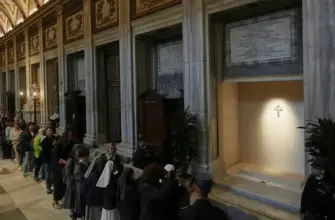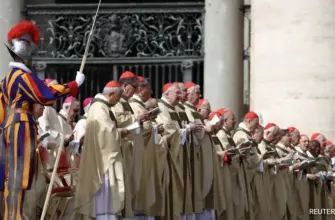Antonia Salzano’s life took an extraordinary turn due to her son, Carlo Acutis, who is set to become the world’s first millennial saint just one week after his canonization.
Despite a background largely devoid of religious observance—having attended Catholic school for convenience and only participating in three sacraments—Antonia’s perspective shifted dramatically following a prediction from a Bologna priest regarding Carlo’s future. This encounter transformed her life, viewing Carlo as “a savior” and a “mystic,” prompting a profound spiritual awakening.
Initially, Antonia approached the deepening faith with a pragmatic mindset, likening the sacraments to school assignments. However, Carlo’s own actions—particularly his use of technology to document Eucharistic miracles and Marian apparitions—demonstrated a radically different approach. He established a website, aptly termed “the light side of the internet,” reflecting his belief that digital tools could be harnessed for good.
“Mother Teresa used to say we don’t need to help around the world because it’s sufficient to go outside our house where we will find our Calcutta,” Antonia recalled. “And Carlo found his Calcutta in Milano.”
Carlo’s mission was evangelization through the internet, a particularly relevant observation given the challenges of modern society. He recognized the spiritual void and the distractions prevalent amongst young people – those lost in hours of social media engagement. His foresight anticipated many contemporary concerns about the potential dangers of unchecked digital consumption.
“Sometimes we are unprepared about this impact of social media, the internet,” Antonia stated. “I understood straight away that the internet had the light side of internet. And you could say that there is also the dark side. Unfortunately, especially young people, pass hours in front of these things and they lose their freedom.”
The story of Carlo Acutis is now being explored through a documentary film, “Carlo Acutis: Roadmap to Reality,” featuring Antonia’s insights. The film utilizes a Catholic pilgrimage to his tomb as a means of challenging teenagers to disconnect from devices and contemplate the spiritual implications of technology.
Antonia emphasized that Carlo’s life serves as an antidote to our digitally-saturated world, suggesting he is “a sign of hope” amid the pervasive influence of social media. She noted the moniker bestowed upon him – “God’s Influencer” and “The Patron Saint of the Internet”—reflecting his ability to connect with youth through familiar platforms.
“He [Carlo] understood there was a lack of faith. He used to say there are thousands of people going in front of a concert, in front of a football match. I don’t see them in front of the Tabernacle, where there is the house of Jesus that is really present among us,” Antonia explained.
Ultimately, Antonia believes Carlo’s legacy lies in his ability to demonstrate how faith can be integrated into everyday life – a “continuous prayer” born from connecting with God’s presence within oneself. She asserts that, through consistent desire and practice, individuals can achieve holiness by embracing their unique roles as “original works of art,” fulfilling the special project God has designated for each person.





